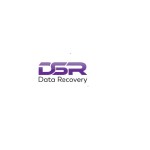Introduction
Network-Attached Storage (NAS) devices are widely used for storing and sharing data across networks. However, data loss can still occur due to various reasons such as hardware failures, accidental deletions, or software issues. NAS data recovery is a crucial process that allows you to retrieve lost data from these storage systems. In this guide, we will delve into the intricacies of NAS data recovery, including common causes of data loss, recovery methods, and best practices to ensure successful data recovery.
Understanding NAS Data Loss
Before diving into the recovery process, it's essential to understand the common causes of data loss on NAS devices:
1. Hardware Failures
NAS devices consist of hard drives and other components that can experience hardware failures over time, leading to data loss.
2. Accidental Deletions and Formatting
Human errors, such as accidentally deleting important files or formatting the NAS drive, can result in data loss.
3. RAID Configuration Issues
Many NAS devices use RAID (Redundant Array of Independent Disks) configurations for data redundancy. However, RAID failures or misconfigurations can lead to data loss.
4. Software or Firmware Issues
Issues with NAS software or firmware updates can cause data corruption or make files inaccessible, resulting in data loss.
Steps for NAS Data Recovery
Here are the steps to follow for successful NAS data recovery:
1. Identify the Cause
Determine the cause of data loss, whether it's a hardware failure, accidental deletion, RAID issue, or software-related problem.
2. Stop Using the NAS
Immediately stop using the NAS device to prevent further data overwriting or damage.
3. Assess Data Recovery Options
Evaluate whether you can perform data recovery in-house using software tools or if professional data recovery services are required.
4. Utilize Data Recovery Software
If the data loss is not extensive or due to physical damage, consider using specialized data recovery software designed for NAS systems. These tools can scan the NAS drives and attempt to recover lost files.
5. Professional Data Recovery Services
For severe data loss cases or when software solutions are not effective, consult professional data recovery services with expertise in NAS data recovery. They have advanced tools and techniques to recover data from complex storage systems.
6. Restore and Verify Recovered Data
Once data recovery is successful, restore the recovered files to a secure location and verify their integrity to ensure they are usable.
Best Practices for NAS Data Protection
To prevent data loss on NAS devices and facilitate easier recovery, follow these best practices:
- Regularly back up NAS data to external drives or cloud storage.
- Implement RAID configurations appropriate for your data redundancy needs.
- Keep NAS software and firmware updated to prevent vulnerabilities.
- Educate users about data management best practices to avoid accidental data loss.
Conclusion
NAS data recovery is a critical process that requires a systematic approach and adherence to best practices. By understanding the common causes of data loss, taking preventive measures, and having a recovery plan in place, you can minimize the impact of data loss incidents on your NAS storage systems.






Comments